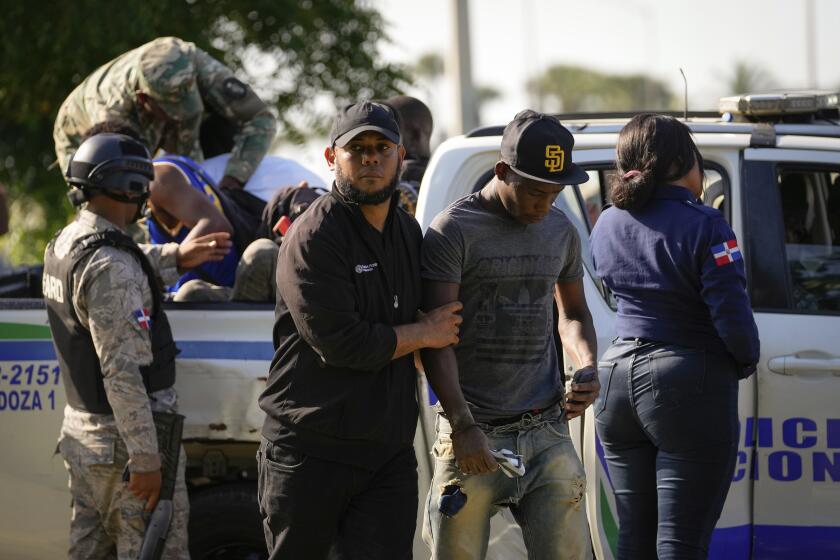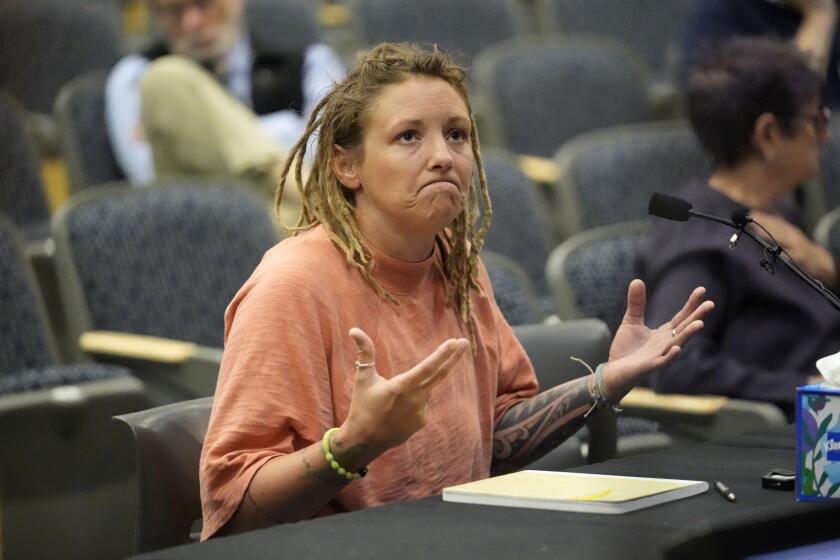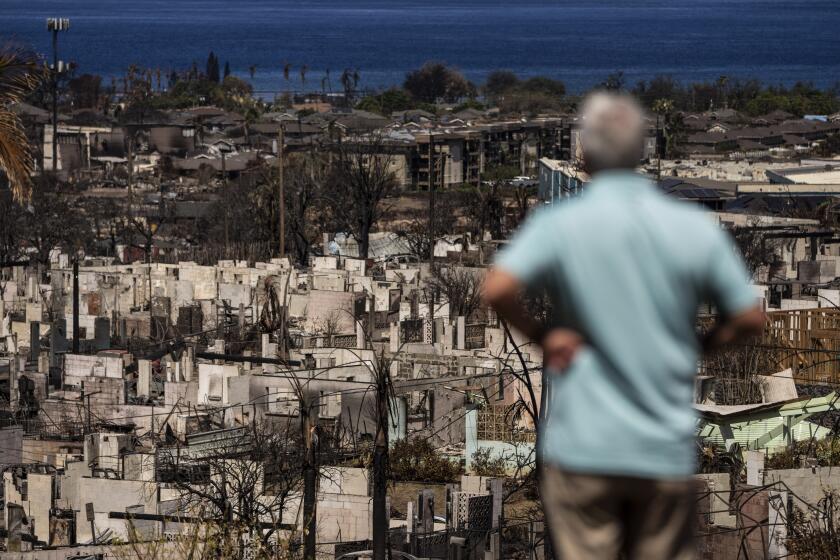Warriors Rampage Freely in Borneo
Tribesmen torched dozens of homes and forced hundreds of terrified residents to flee Monday as they brought their campaign of “ethnic cleansing” to this provincial capital in southern Borneo.
Unchallenged by police or soldiers, Dayak warriors carrying spears and long knives roamed the city, setting fire to buildings and vehicles owned by settlers from Madura island, 350 miles to the south, and then watching them burn.
“We want to get rid of all the Madurese in Borneo,” said a Dayak man after he helped set fire to two large trucks owned by a Madurese government official.
The clash between the indigenous Dayaks and the immigrant Madurese demonstrates the inability of President Abdurrahman Wahid to halt Indonesia’s slide into anarchy and mob rule.
With the explosion of violence by the Dayaks, the government now faces internal warfare in four regions: Borneo, Aceh, Irian Jaya and the Molucca islands.
The Dayak rampage Monday through Palangkaraya, the capital of Central Kalimantan province, marked the ninth day of “ethnic cleansing” against the Madurese, who are resented by the Dayaks for their disregard of Dayak traditions and their success in business.
Officials estimate that 1,000 people have been killed in the conflict. Dayak headhunters are tracking down their victims in villages, on the roads and in the jungle.
Dozens, if not hundreds, of Madurese settlers have been decapitated by the Dayaks, who believe that cutting off the head of an enemy gives them power.
More than 10,000 Madurese who fled their homes were believed to be hiding in the jungle to avoid the same fate. At least 10,000 more were staying in crowded refugee shelters as they awaited evacuation.
National Security Minister Susilo Bambang Yudhoyono denied Monday that the government had been slow to act and pledged to bring the conflict under control in three days. He announced that a battalion of 600 Indonesian army troops had arrived in Palangkaraya.
“We refute the perception that we acted too late,” Yudhoyono told reporters in Palangkaraya. “The local authorities backed up by the local police tried their best to control the situation.”
Later in the day, however, police and troops did nothing to stop Dayaks carrying out their destruction before crowds of onlookers.
One unit of about 30 soldiers observed idly from the street as flames consumed half a dozen houses near the center of Palangkaraya, a mostly Dayak city of 160,000 people. Some of the residents struggled to remove belongings from houses in the path of the fire. None of the soldiers stepped forward to help.
A few hours later, clouds of black smoke billowed from dozens of Madurese houses set on fire by the Dayaks in another part of the city. Some of the Dayaks wrecked houses that would soon be consumed by the fire, but no police officers were on hand to intervene.
As the Dayaks ran amok, more than 50 police officers and soldiers sat around the central police station smoking cigarettes and diligently cleaning their nostrils.
Police spokeswoman Andi Selvi could say little to explain the lack of police action.
“We have our standard procedures,” she said. “Maybe we will get a solution from our chief to handle the situation.”
Last week, police arrested 80 suspects for their role in some of the initial killings. But after supporters staged a protest and threatened to burn down the police station, the police let the suspects go.
Asked who controlled the city--the authorities or the Dayaks--Selvi said only, “No comment.”
More to Read
Start your day right
Sign up for Essential California for news, features and recommendations from the L.A. Times and beyond in your inbox six days a week.
You may occasionally receive promotional content from the Los Angeles Times.






